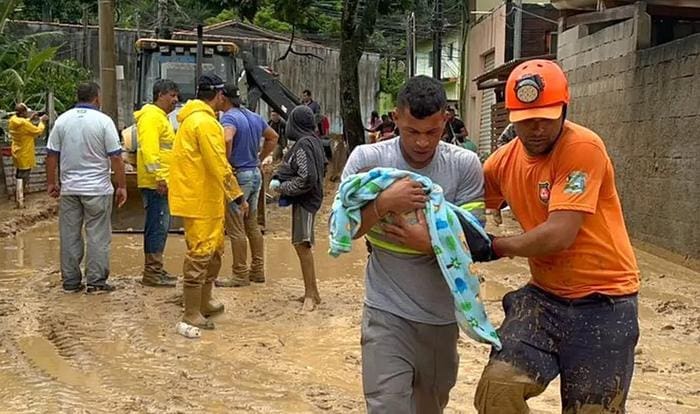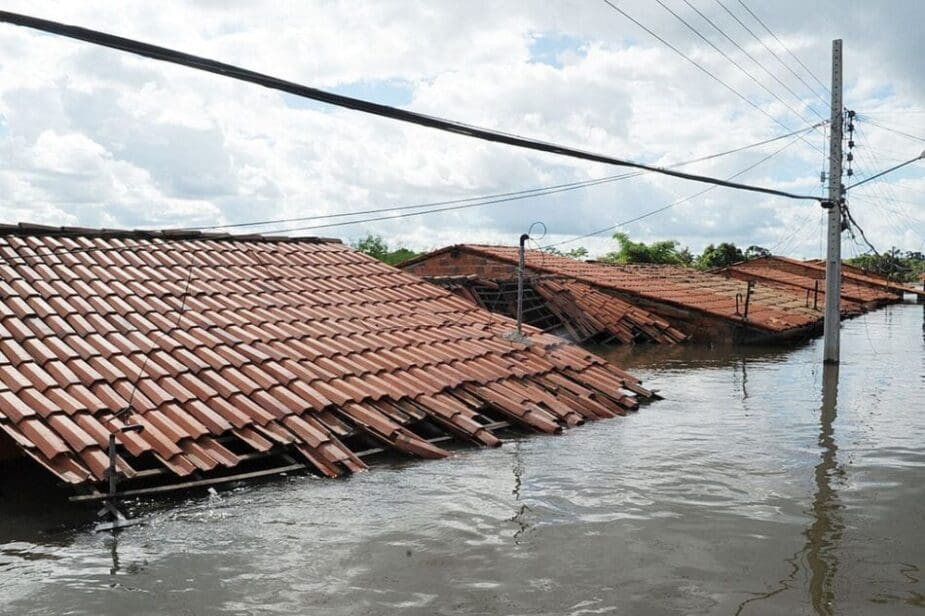Researchers analyzed landslides caused by storms in São Sebastião (Brazil) in 2023, when at least 65 people died, and suggest involvement of the local community in contingency programs.
The constant rise in temperatures and increasing frequency of extreme weather events, especially rainstorms, requires Brazilian towns and cities to develop contingency plans that include efficient monitoring, rapid response, and an efficient local early warning system. The population must understand the threat and know what to do when the responsible bodies issue a warning of an imminent disaster.
Urban planning and adequate infrastructure also play an important role to avoid economic losses and save lives.

These recommendations are among the findings of a study reported in the journal Natural Hazards. The authors of the article conducted a detailed analysis of the landslides that occurred in São Sebastião, a town on the northern coast of São Paulo state, Southeast Brazil, on February 18-19, 2023. They conclude that no effective contingency plan had been put in place there, despite warnings issued days beforehand by the National Disaster Surveillance and Early Warning Center (CEMADEN).
The landslides were caused by unprecedentedly heavy rain in the region – 683 millimeters (mm) in less than 15 hours, compared with a monthly average of 300 mm. At least 65 people died and hundreds were made homeless, not to mention the destruction of infrastructure and other kinds of material damage. Roads were swept away or blocked, causing major transportation difficulties. The state government declared a state of emergency in the municipality.
“There was no real perception in São Sebastião that the warning was of a disaster to come. The areas most affected were those at risk. With extremes of rainfall becoming more frequent and so many homes in vulnerable areas, we won’t reduce losses unless preventive actions are taken at all stages of the chain,” climatologist Jose Antonio Marengo, CEMADEN’s head of research and development, told Agência FAPESP. He is the corresponding author of the article and the second most cited environmental scientist in Brazil in 2023 according to a ranking produced by Research.com.
Marengo is supported by FAPESP via the National Institute of Science and Technology for Climate Change, whose aim is to implement and develop a global interdisciplinary research network on sustainability and the impacts of climate change. It comprises more than 30 groups in Brazil and abroad, involving 200 researchers and specialists.
Marengo was also a co-author of two articles published last year in Weather and Climate Extremes and Natural Hazards and Earth System Sciences on the 2022 floods and landslides in Petrópolis (February 15) and Recife (May 25-28). More than 230 people died in Petrópolis, and over 130 in Recife after 551 mm of rain (140 mm more than the average for May).
In both cases, the researchers reached similar conclusions: quite apart from the huge volume of rain in a few hours, the disaster was due to unplanned urban expansion on hilly terrain and removal of vegetation, as well as flaws in the early warning system and failure to evacuate people living in high-risk areas.
“As with the studies on the disasters in Recife and Petrópolis, this paper wasn’t intended merely to provide a meteorological analysis but to present ideas for practical application. We need to create an awareness that weather forecasters can and do give early warnings of disasters and that the response must be multisectoral,” Marengo said.
“Environmental disaster governance calls for CEMADEN to issue alerts to state and municipal civil defense units, which are to work with fire brigades to warn local residents and evacuate those at risk. In the case of São Sebastião, an alert was sent to the civil defense unit and scenarios were discussed days before. The problem was a break in the chain at the weakest link: vulnerable people.”
São Sebastião’s civil defense unit did not respond to our request for comment.
Losses
In 31 years (between 1991 and 2022, the latest year for which data is available), more than 3,900 deaths occurred owing to floods, rainstorms, tornadoes, gale-force winds, cyclones, hailstorms and landslides. According to the national civil defense authority’s Digital Atlas of Disasters in Brazil, some 16.71 million people were affected by these extreme weather events, which caused damage worth BRL 27.12 billion (now about USD 5 billion).
In 2023, the Ministry of Integration and Regional Development (MIDR) stated that it had allocated BRL 1.4 billion for protection and civil defense in 24 states, including BRL 397 million for aid and relief and BRL 310 million for reconstruction of damaged or destroyed infrastructure and homes.
According to estimates by CEMADEN and IBGE, the national statistics and census bureau, the number of people exposed to risks of landslides and flooding totals 8.27 million nationwide, including 4.26 million in the Southeast region. An analysis focusing on 872 municipalities showed that 2.47 million homes were in high-risk areas (based on the 2010 census). The Statistical Survey of High-Risk Areas (BATER) is being updated with the results of the 2022 census, but the new data has not yet been published.
Results
In this new study, the scientists show that heavy rain fell on densely populated high-risk areas of São Sebastião where many homes are built on steep slopes. The weather consisted of a cold front that crossed parts of the subtropical South Atlantic where sea surface temperatures were between 1 °C and 2 °C warmer than usual. Hemmed in by the hilly terrain of Serra do Mar, the cold front stayed over areas of the north coast of São Paulo and caused extremely heavy rain.
“Although alerts were issued well in advance, the response from the community was minimal, showing that the early warning system in place was ineffective. The solution must include better public policies, better communication, and possibly the implementation of multihazard early warning systems to reduce risk in vulnerable areas,” Marengo said.
The authors suggest that in addition to safe places and escape routes, which are vital to save lives during extreme weather events, a “truly effective” early warning system is required. This would identify imminent threats, issue timely alerts, and ensure that the people and sectors at risk receive warnings, understand them and act on them.
***
About FAPESP
The São Paulo Research Foundation (FAPESP) is a public institution with the mission of supporting scientific research in all fields of knowledge by awarding scholarships, fellowships and grants to investigators linked with higher education and research institutions in the State of São Paulo, Brazil. You can learn more about FAPESP at www.fapesp.br/en and visit FAPESP news agency at www.agencia.fapesp.br/en to keep updated with the latest scientific news.
Journal Reference:
Marengo, J.A., Cunha, A.P., Seluchi, M.E. et al., ‘Heavy rains and hydrogeological disasters on February 18th–19th, 2023, in the city of São Sebastião, São Paulo, Brazil: from meteorological causes to early warnings’, Natural Hazards 120, 7997–8024 (2024); DOI: 10.1007/s11069-024-06558-5
Article Source:
Press Release/Material by Luciana Constantino | São Paulo Research Foundation (FAPESP)
Featured image credit: Antônio Cruz | Agencia Brasil | CC BY 2.5




